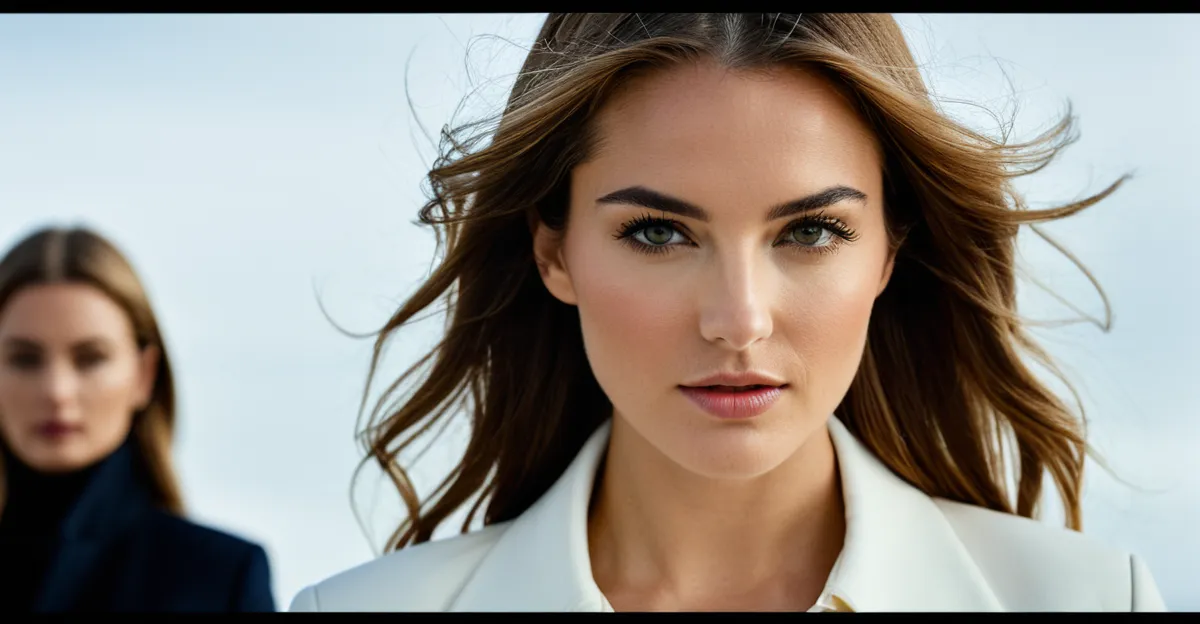Immediate impacts of current women’s fashion trends in the UK
The UK women’s fashion trends reflect rapidly evolving tastes shaped by vibrant catwalk shows and seasonal shifts. Designers increasingly feature bold colors, relaxed silhouettes, and sustainable fabrics, immediately influencing what consumers seek. These emerging fashion trends UK signal a turn toward practicality combined with style, prompting shoppers to prioritize versatility and eco-conscious choices.
This shift impacts consumer purchasing behaviour significantly. Many shoppers now favor brands that commit to sustainability, pushing high street and luxury brands to expand their eco-friendly collections. The demand for transparency regarding material sourcing and production methods has risen sharply, showcasing the impact of trends beyond aesthetics to social responsibility.
In the same genre : How Do Cultural Shifts Affect Women’s Fashion Trends in the UK?
UK retailers respond swiftly. High street brands quickly adapt, offering affordable reinterpretations of catwalk looks, while luxury labels emphasize craftsmanship and sustainability in their collections. These immediate industry reactions confirm how dynamic and responsive the UK fashion market is to consumer trends. As a result, the emerging fashion trends UK not only dictate styles but also shape ethical priorities, creating a palpable ripple effect across the entire fashion ecosystem.
Expert insights and future predictions for UK women’s fashion
Delving into the fashion industry UK, experts emphasize a vibrant evolution informed by sustainability and technology. A key fashion forecast UK trend is the embrace of eco-friendly materials like organic cotton and innovative fabrics derived from recycled plastics. This shift meets growing consumer demand for ethical choices without sacrificing style or quality.
Also to discover : How are UK women’s fashion brands embracing diversity in their collections?
Leading voices in the sector highlight that upcoming seasons will showcase bold yet wearable silhouettes. Expect a move towards fluid, versatile cuts that cater to both comfort and elegance—ideal for the modern UK woman’s multifaceted lifestyle. Colours predicted to dominate include earthy tones with vibrant accents, reflecting a blend of natural inspiration and urban energy.
Technology’s influence is undeniable, as designers increasingly integrate advanced textile treatments and digital design tools. These innovations allow for expert opinion fashion to envision collections that respond dynamically to climate and occasion, pushing creative boundaries while ensuring sustainability.
Overall, the fashion industry UK is on the cusp of a transformation where tradition meets cutting-edge ideas. By prioritizing environment-conscious fabrics and adaptive design, the UK market sets a forward-thinking example globally. Readers keen on future trends will benefit from observing how technology and materials evolve hand in hand in this dynamic space.
Cultural influences and global context shaping UK women’s fashion
The fashion landscape in the UK is deeply intertwined with cultural influences, reflecting a vibrant mix of local heritage and global trends. UK women’s fashion often draws inspiration from the nation’s rich pop culture and music scenes, which have historically driven bold, expressive styles. For example, the punk movement of the 1970s introduced rebellious, DIY aesthetics that continue to influence contemporary designs. Social movements promoting diversity and inclusion have also reshaped fashion narratives, encouraging greater representation and styles that celebrate individuality.
When comparing UK vs global fashion, the UK stands out for blending avant-garde creativity with practical, street-ready looks. While international trends may emphasize high luxury or minimalism, UK fashion thrives on juxtaposing tradition with innovation. Global fashion trends, such as sustainability and gender fluidity, are embraced but often reinterpreted through the lens of British cultural identity. This blend of the global and local enriches the fashion scene and keeps it uniquely dynamic.
Diversity plays a key role in shaping trends. The multicultural population contributes to a vibrant style ecosystem, where influences from South Asian, African, and Caribbean cultures enhance the UK fashion mosaic. This cultural fusion fuels fresh ideas while affirming the importance of inclusion and representation in a global fashion context.
Consumer behaviour trends and sustainability in UK women’s fashion
Consumer trends fashion in the UK increasingly reflect a shift towards sustainable fashion UK and ethical shopping UK. More women are prioritizing eco-friendly products, driven by heightened awareness of environmental and social impacts. This change is not only about choosing greener materials but also involves a holistic approach to consumption, including upcycling, vintage shopping, and clothing rentals.
The rise of vintage and rental fashion in the UK highlights how consumers seek variety without contributing to waste. These practices directly support sustainability by extending garment life cycles and reducing demand for new, resource-intensive production. Retailers adapting to these consumer trends offer more sustainable options, responding to the growing preference for transparency and responsible business practices.
Demographic shifts also influence this behaviour. Younger generations consistently rank ethical shopping UK as a priority, demanding brands align with their values on sustainability and fair labor. Meanwhile, older consumers are increasingly adopting these values, expanding the market for sustainable fashion UK. This collective shift underscores how consumer trends fashion are reshaping the UK’s womenswear landscape, emphasizing the importance of ethics and sustainability in purchasing decisions.
Key statistics and visual trends defining the current UK market
Understanding UK fashion statistics provides a clear snapshot of market dynamics. Recent analysis reveals a steady growth in online shopping habits, with 45% of UK consumers now purchasing fashion items digitally. This shift highlights the increasing importance of e-commerce in the fashion sector.
London Fashion Week continues to set visual trends, showcasing bold patterns, sustainable fabrics, and eclectic color palettes. These fashion visual trends have filtered down to high street collections, reflecting a blend of innovation and commercial appeal. Retailers report that incorporating these trends boosts customer engagement significantly, with in-store displays echoing the runway’s vibrant aesthetics.
Market analysis fashion reports indicate that retail performance is stabilizing post-pandemic. Brick-and-mortar stores see a gradual return of foot traffic, yet omnichannel strategies remain vital. Brands successfully integrating online and offline shopping experiences report higher customer retention.
These statistics and trends underscore a market in transformation. For businesses and consumers alike, staying informed on UK fashion statistics and applying insights from fashion visual trends and market analysis fashion is essential to navigate the evolving landscape confidently.




